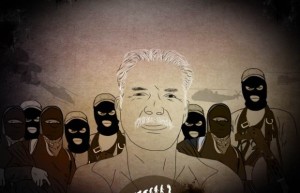By Julia Airey
Staff Writer
The War on Drugs ravishing North and South America is experiencing a turn of events.
The War on Drugs is the name coined by US American media in 1971 following a conference hosted by President Nixon where he declared drugs,  “public enemy number one”. Today the War on Drugs in the Americas has evolved into a conflict centered on preventing the production, transportation, and sale of drugs. This international conflict is perpetuated by the fact that these drugs – namely marijuana, cocaine, and heroin – offer a lucrative business opportunity to any cartel that can control and protect their production and distribution. The in-fighting between these drug cartels and the military interventions staged by several governments has resulted in a bloody standstill that has seen little positive progress over the past fifty years.
“public enemy number one”. Today the War on Drugs in the Americas has evolved into a conflict centered on preventing the production, transportation, and sale of drugs. This international conflict is perpetuated by the fact that these drugs – namely marijuana, cocaine, and heroin – offer a lucrative business opportunity to any cartel that can control and protect their production and distribution. The in-fighting between these drug cartels and the military interventions staged by several governments has resulted in a bloody standstill that has seen little positive progress over the past fifty years.
The position of civilians who are caught in the crossfire is a fragile one. Mexico is one country where this is particularly true, with civilian death tolls numbering in the thousands each year and steadily increasing. And although most of these killings occur in the US-Mexico border cities of Tijuana and Juárez, the threat of violence is a presence felt across the country.
Part of the reason why civilian death tolls continue to climb in Mexico is due to state and federal governments’ inability to protect civilians from the cartels who control certain areas. This defenselessness is perhaps more prevalent in areas formerly under US military protection, as the US handed over many drug war duties to the Mexican government in 2006. Since this policy shift there have been a total of 77,000 civilian deaths related to the war on drugs. Yet in a report released by the American Associated Press, and expanded on by Al Jazeera, it would appear that many civilians in the state of Michoacan have decided to take defense into their own hands.
Together they make a group who call themselves las autodefensas. The group is comprised of Michoacan citizens and created in response to a series of crippling taxes as well as violent attacks from the cartel who controls much of their state, the Knights Templar. As of now, la autosdefensas have grown to control 17 municipalities (of 113) in Michoacan.
Referred to by the Associated Press as, “a vigilante monster”, la autodefensas claim to be responding to a corrupt system of governance, which has left its people vulnerable to everything from kidnapping, to land seizure at the hands of the Knights Templar. Statements provided in interviews indicate that la autodefensas believes its actions do not constitute criminality, but rather justice as they are the means to provide basic security to the people.
However, pressure on the group is mounting on all levels. Civilians have been shot during la autodefensas protests against the Mexican military who, after having tolerated the group, plans to disarm them. Protests against the government continue, as Michoacans feel that la autodefensas have provided a security that has been absent in the region for many years now. Bolstered by the community support, and still facing conflict from the Knights Templar, la autodefensas have declared they will refuse to lay down arms until the Mexican government dismantles the Knights Templar. Results from other civilian militias that have formed across Mexico, indicate that their presence does decrease general rates of violence within the community, however many criticize fighting violence with violence as a tool for peace.
Will tolerating armed vigilante groups merely beget more violence, or are they a just solution for governments that are incapable of protecting their people?
Julia Airey, class of 2015, is a Law and Linguistics major from Ashby, Massachusetts, United States.
